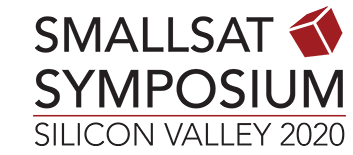

We will discuss in detail what smallsat solutions bring to the market place, which applications are being developed and how do new constellations contribute to the observation market?
What is the future of this market in terms of technology, platforms, standards and services? High resolution and accuracy of data provide a range of solutions with the four major players at the moment being Planet, DigitalGlobe, Spire and BlackSky. Given that these leaders are all developing large constellations, in what applications are constellations essential. What are the useful functions that independent smaller observation platforms can serve?
From agriculture & mining to traffic observation, mapping & weather, tracking biodiversity and wildlife trends, natural resources, such as energy, freshwater and agriculture, small satellites provide an opportunity to observe our planet in considerable detail. Not just observation but measuring changes in land-use and urban development,
The market includes monitoring and responding to natural disasters, managing , addressing public health, maritime safety and lastly but very importantly military observation and monitoring.
In how many ways can geospatial data be presented and be useful? Who are the important customers and what are their primary concerns and requirements? What are the main observation operators’ market share by vertical and by region and how will pricing of imagery evolve by type and by resolution? What model for data purchase will dominate and how are downstream players changing the way imagery is bought and sold?
 Adam Keith
Adam Keith
Adam Keith is an independent advisor, consultant and market intelligence analyst focused on the space sector. In 20 years in this capacity, he has advised a wide range of clients including government organizations, investors and commercial actors along the value chain. He is also an Affiliate Principal Advisor at Euroconsult with a specialization in Earth Observation (EO) and disruptive technologies.
He has managed and contributed to over 100 consulting and market intelligence projects, specializing in EO market and industry, satellite imaging and operations, smallsat technology and government programs. When joining Euroconsult in 2006, Adam initiated it’s research and consulting activity in the EO sector leading to the “Earth observation: Market Prospects” report; now in its 12th edition, the first annual research report focused on evolutions within the sector.
He held various positions at Euroconsult, including the director of the company’s Space Practice, and as the Managing Director of Euroconsult Canada. His previous experience includes working for the European Space Agency and the UK National Remote Sensing Center (now Airbus Defense & Space). Adam holds a Masters in Remote Sensing from Cambridge University and a B.Sc. from the University of London.
 Emiliano Kargieman
Emiliano Kargieman
|
Emiliano Kargieman serves as Chief Executive Officer at Satellogic. He has spent the last 25 years building technology and technology companies. In 2010, after spending some time at the NASA Ames Campus in Mountain View, he started developing the concepts that would become Satellogic. Prior to co-founding the firm, Mr. Kargieman co-founded Core Security Technologies, where he has served in several operational roles and developed the first automated penetration testing software, earning the loyalty of clients such as Apple, Cisco, Homeland Security, NSA, NASA, Lockheed Martin, and DARPA. Previously, Mr. Kargieman has independently consulted for several corporations and government agencies. He also started three other technology endeavors and served as a Member of the Special Projects Group at the World Bank. As the co-founder and Managing Director of venture capital firm Aconcagua Ventures, Mr. Kargieman focused on investing in high-tech startups in Latin America to develop them as global businesses. In 2009, he co-founded GarageLab, a problem-solving laboratory based on an innovative multidisciplinary approach involving science, technology, art and business. |
|
Emiliano is 44, has a formal background in Number Theory and Philosophy and is married to Pola, a fiction author who shares his passion for technology. When not thinking about, or building technology, Emiliano enjoys reading, writing, playing chess and other random sports. He is trying to learn to play the trumpet. |
 Chris Lentz
Chris Lentz
Christopher Lentz joined the Commercial Remote Sensing group in January of 2013 as Chief Architect. In this role, Mr. Lentz is responsible for defining new remote sensing solutions and architectures. In addition, he is responsible for identifying new markets and new solutions to meet user needs; engaging with potential customers to define requirements, developing the commercial remote sensing strategy, and leading new business pursuits.
Prior to this role, Mr. Lentz spent the majority of his 25 -year career in systems engineering, specializing in mission performance analysis, concept-of-operations (conops) definition and architecture design. Mr. Lentz was the WorldView-4 Satellite Mission Analysis & Conops Manager, responsible for all performance-related evaluations, budgets, requirements, and verification. The remainder of his career was spent supporting U.S. Government programs in a variety of roles, including Systems Engineering Payload Manager, Chief Systems Engineer, and mission analysis lead on a variety of remote sensing programs spanning all phases of program development from concept synthesis, through design, manufacturing and operations.
Mr. Lentz received his Bachelor’s and Master’s degrees in Aeronautical and Astronautical Engineering from the Massachusetts Institute of Technology.
 Dan Nevius
Dan Nevius
Dan Nevius is a Co-Founder and COO of Analytical Space, a Boston-based startup building a network of small satellites that use RF and optical communication to provide a data relay service for remote sensing satellites. Before starting Analytical Space, Dan was the Director of Special Projects at Planetary Resources, the asteroid mining company, where he worked on business development and strategy for the CERES constellation, a network of hyperspectral remote sensing satellites, and the company’s long-term vision of asteroid prospecting. Dan also briefly worked at BCG in the London Office and the Space and Science Branch of the White House Office of Management and Budget. He graduated from HBS in 2017 and earned his MSc in Space Science and Engineering from UCL in London, an MPhil in Engineering from the University of Cambridge where he researched methods for 3D printing large structures on the moon using local materials, and a BS in Engineering and Astrophysics from Harvard University. Analytical Space recently won NASA iTech Cycle III and Dan was selected for Forbes “30 under 30” in Science.
 Dr. Bert Vermeire
Dr. Bert Vermeire
Chief Technical Officer PI/PM Education: MSEE, Katholieke Universiteit Leuven Ph.D. in EE & CE, The University of Arizona Dr. Vermeire joined Space Micro from Arizona State University, where he was an associate professor of research and director of the Wireless and Nanotechnology research programs. He has been the principal investigator on a wide variety of research topics, including radiation effects on microcircuits and novel design techniques for mixed-signal circuits using CMOS and SiGe fabrication technologies. His recent projects include the development of Radiation Hardened by Design (RHBD) integrated circuits under the Trusted Foundry program.
Dr. Vermeire spent 3 years as CTO at Ridgetop Group in Tucson before joining Arizona State University as a research professor in 2005. He holds 7 patents and has authored more than 50 peer-reviewed publications. Dr. Vermeire received a Master of Science in Electrical Engineering from the Catholic University of Leuven, Belgium in 1991 and a Ph. D. in Electrical and Computer Engineering from the University of Arizona in 1999.